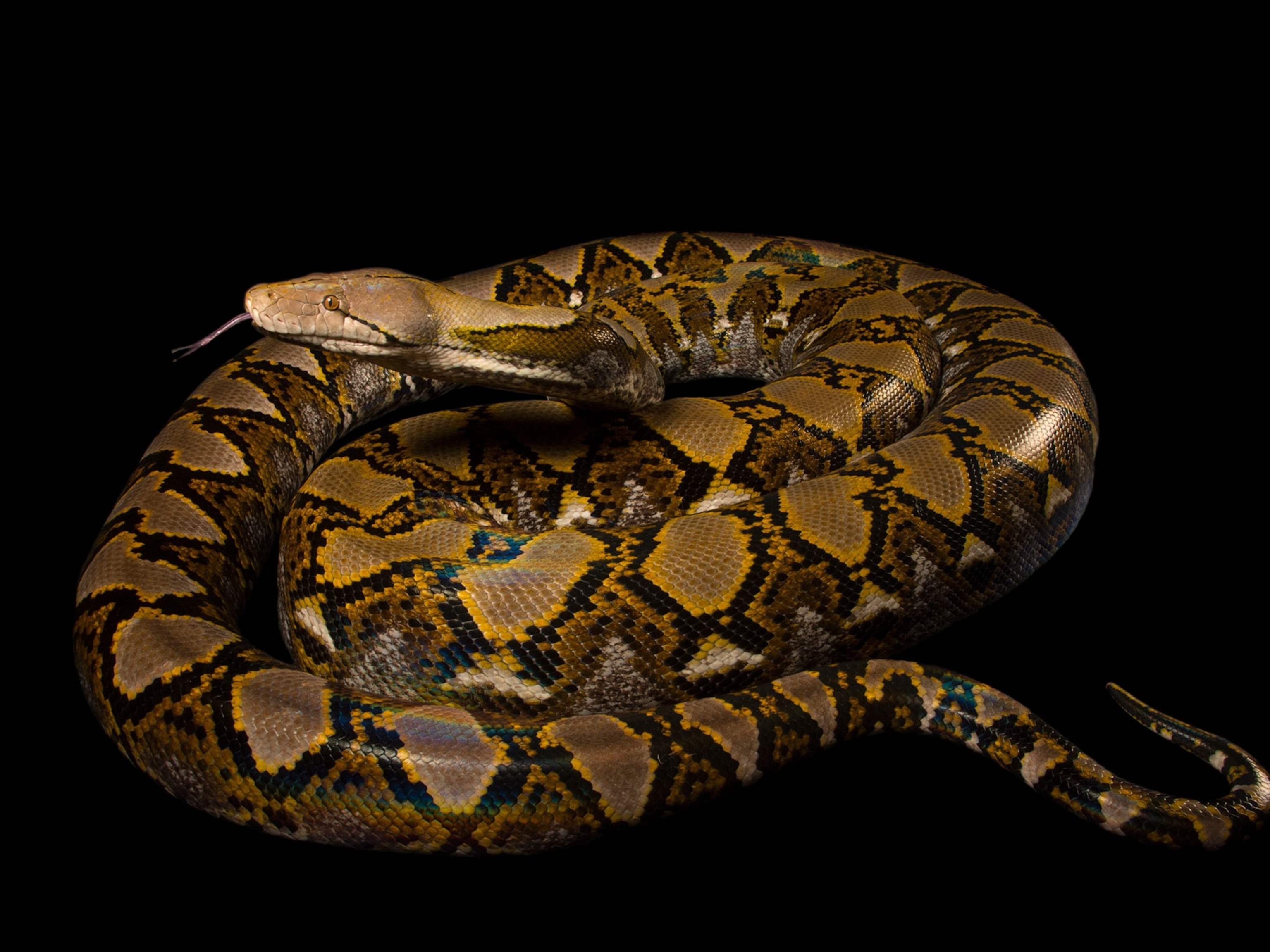How This 23-Foot Python Swallowed a Man Whole
A shocking video from Indonesia reportedly shows the moment a snake was cut open and a 25-year-old man was found inside.
At first the video is blurry and difficult to make out. A bunch of men standing around a python begin slicing its belly down the middle. It soon becomes apparent that something of note is inside the giant snake, but it's not immediately clear what has drawn so much attention.
Then you see it: An entire grown man, swallowed whole, lies dead inside the python.
According to local news reports, the body found inside the 23-foot-long snake turned out to be 25-year-old Akbar Salubiro, a harvester who worked on a palm oil plantation on the Indonesian island of Sulawesi. He was reported missing on March 26.
(The snake that eats toads to steal their poison)
Local media also report that the snake involved is a reticulated python. These snakes are among some of the largest in the world, growing over 20 feet long and weighing more than a hundred pounds.
Similar to Burmese pythons, these huge snakes kill their prey before consuming it, making it unlikely Salubiro was eaten alive.
A 2015 study found that, contrary to popular belief, pythons and other constricting snakes such as boas and anacondas don't suffocate their victims and instead kill by cutting off their blood flow, a method that ends life much more quickly.
Scott Boback, a vertebrate ecologist at Dickinson College in Carlisle, Pennsylvania, spoke to National Geographic in 2015 about how this type of attack kills its victims.
"The heart literally doesn't have enough strength to push against the pressure," he said. When well executed, a python's powerful squeeze could end blood flow to the heart within seconds.
Once its prey has been captured, pythons have successfully eaten some surprisingly large animals, such as crocodiles, hyenas, and even other snakes. They typically size up their prey before consuming it, but they have been known to miscalculate. In 2005, a python in Florida tried to consume an entire alligator, which resulted in it bursting.
Reports of them eating humans, though, have been exceedingly rare.
In this case, the man's shoulders would have presented the only major obstacle for the python to swallow its victim whole, Mary-Ruth Low, Singapore Zoo's research officer and python expert, told the BBC.
"The restricting factor is human shoulder blades, because they are not collapsible," she said.
Rahmansyah, a lecturer at Hasanuddin University in Makassar, believes deforestation caused by the palm oil industry may be to blame for this snake's unusual behavior.
“Because the habitat is destroyed, the snake’s natural food sources are also affected. Thus, the snake went out to the palm oil plantation to seek prey,” he told the Jakarta Post.
Palm oil is harvested for its use in many common household items, from soda to soap, and the industry has resulted in loss of habitat for animals such as orangutans and Sumatran tigers.
Palm oil harvesters in Sulawesi are reportedly staying home after the horrific incident.





